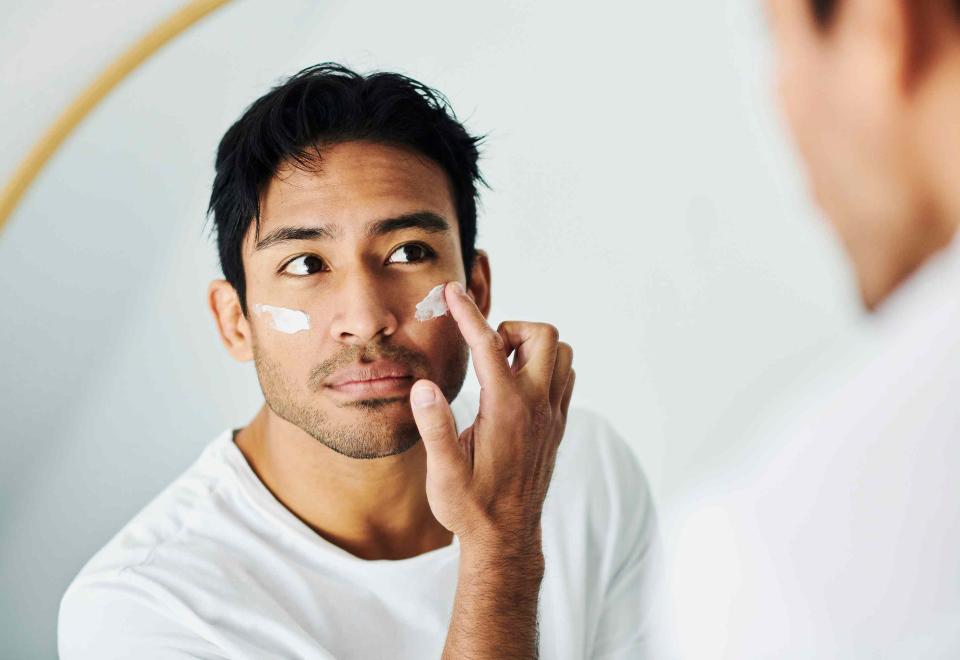Ask a Beauty Editor: Does Sunscreen or Moisturizer Go First?
I have two answers.

Delmaine Donson/Getty Images
Ever wanted to pick the brain of a beauty editor? Or get beauty product recommendations from someone who has tried them all? You've come to the right place. In our weekly series, beauty editor Hana Hong answers your biggest skin care, hair care, and makeup questions, all submitted by Real Simple readers. Tune in every Tuesday and submit your own burning beauty questions here for a chance to be featured.
Reader question: Does it matter if you apply sunscreen or moisturizer first? —@stephanie_savarese
The time you apply sunscreen is probably a no-brainer—the morning, FYI—but as for when to apply in your however-many-steps skincare routine, you may have received mixed responses.
TL;DR: The dermatologist-approved answer is usually last, i.e. after moisturizer. Think of it this way: Your moisturizer is like a sweater, and your sunscreen is like the coat you wear over it. "It's your outer protective layer," says Joshua Zeichner, MD, board-certified dermatologist in New York City. "You want to make sure that nothing interferes with it." When you put it on last, the sunscreen can intercept and/or block the sun's damaging rays before they get to your skin.
Also keep in mind that if you apply the sunscreen first, you might rub some of it off when you slather on your moisturizer, which means you won't get as much protection as you should. "Because zinc oxide and/or titanium dioxide (main ingredients in sunscreen) sit on top of the skin to scatter and deflect UV rays, physically blocking them from penetrating the skin, it makes sense to apply these products last," says Hadley King, MD, board-certified dermatologist in New York City.
However, chemical sunscreens are an exception. While physical sunscreens (zinc oxide and titanium dioxide) work by reflecting UV away from the skin, chemical sunscreens are made up of chemicals that absorb the UV rays, change the UV rays into heat, and release it from the skin. In order words, they need to be absorbed into the skin to start working. "To maximize their absorption, they should be applied before any occlusives (read: moisturizers)," says Dr. King. Wait for 30 seconds before applying your moisturizer on top of it.
Another caveat is moisturizer with sunscreen included, which you should take with a grain of salt. Remember: Sunscreen is a standalone layer, not an ingredient. Although it may say SPF 15 (FDA recommends SPF 15 or higher) on the label, it will be diluted out by the moisturizer, so the amount you put on your face will not be enough to get that much coverage. That’s not to say moisturizer with SPF is a bad thing—just consider it a nice bonus and not a replacement for your actual sunscreen.
For more Real Simple news, make sure to sign up for our newsletter!
Read the original article on Real Simple.

